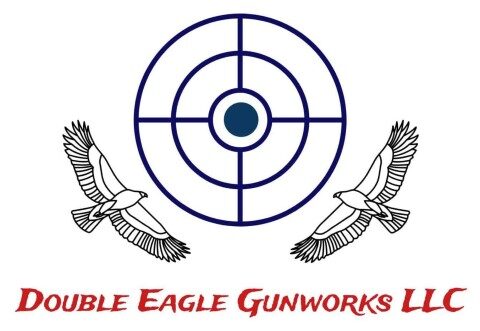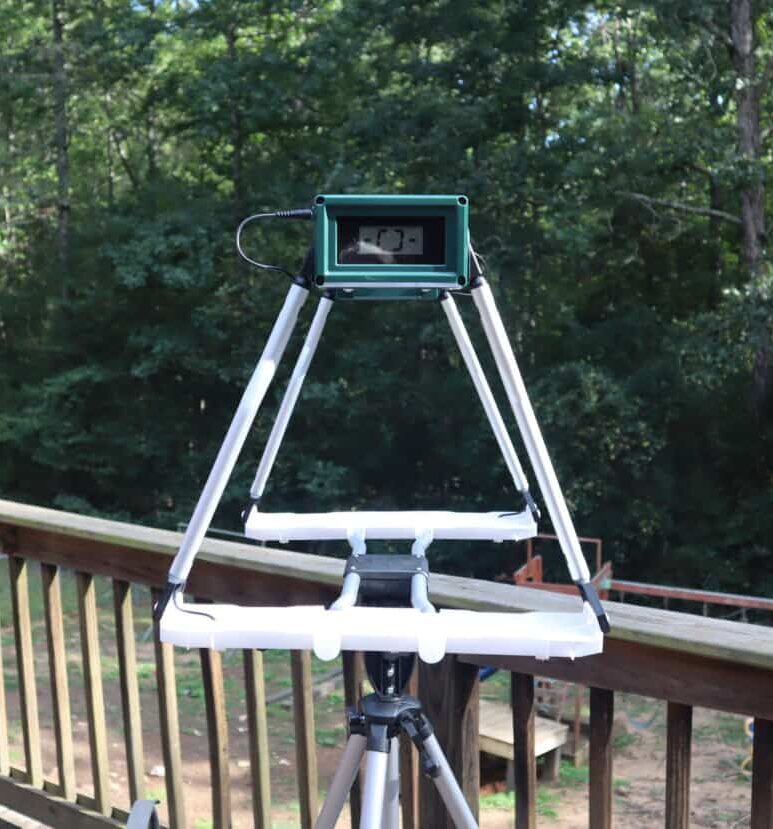Today my husband is out on our shooting range augmenting the dirt berm, a giant wall of dirt to catch stray bullets that don’t stop when they hit a target.
How Far Bullets Travel
I wondered how far a bullet could go if nothing got in its way, and here is a compilation of the information I found. You can find out how fast your ammunition typically travels by reading the side of the box.
| Type of Gun | Type of Ammunition | Speed in feet per second | Distance Traveled |
| Revolver | .38 Special | 900 fps | 5550 feet |
| Pistol | .45ACP | 850 fps | 5000 feet |
| Rifle M107 | .50 | 2800 fps | 22,500 feet |
| AR-15 | .223 Remington | 3240 fps | 11,625 feet |
| Shotgun | 00 | 1200 fps | 3600 feet |
| BB Gun | .177 | 590 fps | 1380 feet |
| M16 | 5.56 | 3000 fps | 11,811 feet |
| Musket | .69 to .80 | 1351 fps | 3600 feet |
When I looked up the question I got a lot of discussion forums such as this one on quora.com. I had to work hard to find all that data, because most sources mentioned either the speed or the maximum range, and figures for the same item varied according to what I was reading.
I chose a representative from each of the various kinds of guns to give you an idea how the numbers differ from one type to another.
I used the largest numbers when I found discrepancies. The range will vary according to the angle at which you shoot, the wind, how steady you are, and other variables such as atmospheric pressure and the air temperature. Take this list as a very general estimate.
Bullets Can Travel More Than a Mile
A mile is 5,280 feet. The M16 machine gun and the AR-15 rifle shoot over 2 miles. Even the humble BB gun will travel a quarter of a mile in the absence of other obstacles before gravity makes it fall.
In 2017 a Canadian sniper (source: foxnews.com) in Iraq actually shot an ISIS fighter 2.2 miles away using a McMillan TAC-50 sniper rifle chambered in .50 caliber with 750 grain Hornady ammunition.
The sniper had to calculate the bullet’s trajectory against the wind velocity and keep in mind the speed of the earth’s rotation to do that, with the help of a spotter who determined the best moment to make the shot.
The M107 rifle, a recoil-operated semi-automatic sniper system made by Barrett Firearms Manufacturing and used by the military, has a maximum range of four and a quarter miles. Think of something four miles from your house. That’s a long way.
Effective Range is Not the Same
The effective range of a gun is an entirely different matter. That is how far you can shoot with the likelihood of hitting your target. For the M107 the effective range is 5,907 feet, still over a mile. The effective range of a BB gun is 1080 feet, about a fifth of a mile.
All this amazing distance underscores one of the fundamental tenets of safe shooting: know your target and what is beyond it. At 900 feet per second, your .38 Special ammunition will keep traveling until it hits something or runs out of inertia.
It is possible that the bullet you shoot at a burgler in your living room may travel through the living room wall and into the next room. When you are shooting to stop a threat, keep in mind the location of those you are protecting.
How Fast Bullets Travel: The Chronograph Numbers
To measure the velocity of a bullet you use a chronograph.
The chronograph works by measuring the air that accompanies the speeding bullet as it whizzes past a sensor similar to a RADAR. You actually shoot through the device, so aim carefully!
A Brief Overview of The Variables That Affect Speed
The speed of the bullet varies with temperature, air pressure, humidity, and barometric pressure because all three affect the density of the air.
Thicker air impedes the bullet’s travel. Altitude causes the air to thin but compensates with lower temperatures. Gundigest.com has a series of articles that go much deeper into the science of ballistics.
Temperature
The temperature matters when measuring speed. Increased temperatures decrease the density of the air through which the bullets are moving. Higher temperature causes the powder to burn hotter and faster for higher velocity.
Humidity
Higher humidity thins the air, moving the bullet faster, but humidity changes have a negligible effect on the speed of the bullet.
Barometric Pressure
Barometric pressure varies with the movement of weather fronts. Higher pressure occurs in calmer weather, with stormy weather bringing lower pressure. Steady pressure occurs when the weather is unchanging.
Cooler air molecules traveler closer together, increasing density and pressure. Dense air presses down on the air below it, increasing the temperature.
Hotter air molecules move apart, decreasing density. Low pressure air rises, allowing the cooler air to collect below it. All of this change produces the jet stream that the television weather predictors show on a map when explaining weather fronts.
Barometric pressure at Standard Metro sea level is 29.53 inHg, or 1000 mbar, with humidity at 78 percent and a temperature of 59 degrees Farenheit. These numbers are used to compute ballistic data.
The area where we live is approximately 751 feet above sea level. The Barometric pressure we saw that day was 1017 mbar, which converts to 30.032 inHg, pretty close to the Standard Metro number.
Our temperature was in the low eighties, decreasing the density of the air compared to Standard Metro, which should increase speed slightly. It was a humid day with cloud cover and not much breeze, and we filmed the shots in the afternoon.
The breeze is also a factor because it pushes the flight of the bullet to the right or left. Wind speed is affected by barometric pressure as air moves from higher to lower pressure areas.
Chris loaded a Ruger American Predator bolt action rifle with 6.5 Creedmoor 140 grain Core-Lokt ammunition from Remington. The number on the side of the box suggested 2700 fps. He shot five rounds at a distance of 10 feet in each category. Here’s how it shot:
- Temperature 83 degrees
- Barometric Pressure 1017 mbar
- Average 2589 fps
- Minimum 2576 fps
- Maximum 2601 fps
- Spread 25 fps
Chris shot factory .300 Blackout 140 grain with an AR style rifle that he built himself. The usual range quoted for .300 Blackout is 1900 to 2200 fps. This is what he found:
- Temperature 84 degrees
- Barometric Pressure 1017 mbar
- Average 1846.8 fps
- Minimum 1832 fps
- Maximum 1860 fps
- Spread 28 fps
Then he shot 9mm ammunition that he made himself with 4.7 grain of CFE Pistol powder and a 125 grain full metal jacket bullet.
He chose a light powder load to start, with the intention of ramping up to more powder after he tested the first batch. He used his FN FNS-9 pistol. I looked at several boxes of 9mm and they gave estimates from 1101 to 1189 fps on factory rounds.
- Temperature 82 degrees
- Barometric Pressure 1011 mbar
- Average 1039 fps
- Minimum 1030 fps
- Maximum 1050 fps
- Spread 20 fps
The spread between high and low numbers tells you how consistent the ammunition is between rounds. The hand loaded ammunition had a lower spread than the two factory rounds.
None of the rounds reached the speed predicted on ammunition boxes, but they were in the general vicinity of those numbers.


